► Inside the new ‘Renaulution’ plan
► Major turnaround strategy revealed
► Alpine-Lotus EV, Renault 5 is back
A major new industrial strategy is being unveiled today by Renault – and it’ll usher in a new electric sports car co-developed with Lotus, other electric Alpines including a hot hatch and a sporty crossover, a Renault 5 retro EV and bargains galore from Dacia and Lada.
Dubbed ‘Renaulution’ it’s the brainchild of new CEO Luca de Meo, whose mission is to turn around the French car-making giant in the wake of the Carlos Ghosn years and cracks appearing in the Renault-Nissan alliance.
This is a breaking news story and we will update more in the coming hours on the plethora of detail in the announcement. Read on for our essential briefing.
Renault 5 electric in detail
Full story on the electric Alpines coming
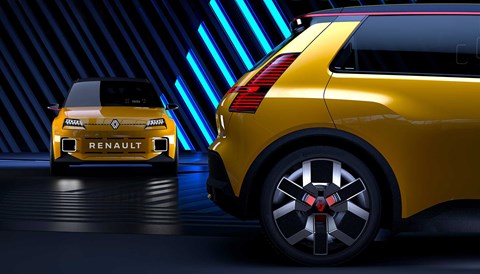
Key highlights of the new strategy are:
- Newcomers include an all-electric Renault 5 (above) – shown as a prototype for now, expected in 2023
- Alpine becomes 100% electric, ‘next-generation EV sports car [under development] with Lotus’
- Range of three Alpine models outlined – including a hot hatch and sporty crossover
- Group platforms cut from six to three as part of major cost-cutting drive
- Electrification bites: number of powertrains halved to four, as EVs boosted
- Factories likely to be axed as production capacity slashed from 4 million to 3.1m
- Renault aiming for electric leadership by 2025, building on past decade of experience
- Dacia and Lada paired up – Lada moving beyond Russia to become ‘rough and tough’ entry-level brand
- New Dacia Bigster concept points to a new, larger, slicker family crossover
- More car-sharing and future mobility projects underway
Read on to find out more detail on the headlines.
Alpine goes 100% electric
Significant for enthusiasts is the news that Alpine will become 100% electric, using the group’s CMF-B and CMF-EV platforms. Importantly, this shows that multiple bodystyles are coming – and the former points to a new junior crossover being in the plan.
The announcement included confirmation of an exciting Anglo-French alliance: ‘Renault and Group Lotus have signed a memorandum of understanding to study a number of areas of cooperation, including the joint development of an EV sports car.’
The following slide was flashed up during the presentation, confirming that Alpine will spawn a range of models in addition to the A110 sports car that relaunched the brand in 2017. It involves a hot crossover for family duties (below centre), a hot hatch (below left) and an EV replacement for the A110 (far right) – and, tellingly, all three are plugged in, proving their electric creds.
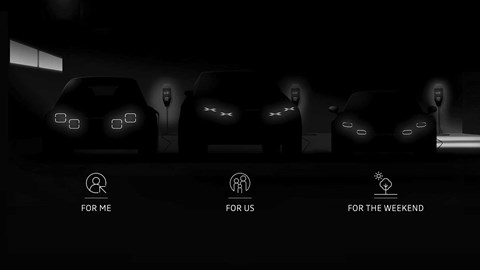
Alpine will become the group’s centre for all sports cars, including Renault Sport and racing activities. F1 will be at the heart of the project, but it’s telling that de Meo is targeting this division with being profitable by 2025… sports cars don’t make the margins they used to, it seems.
More on electric Alpines
What’s this about Lada making a comeback?
The Renault group owns two strong budget brands – and Dacia and Lada will be run as a single business unit in future. ‘Dacia will stay Dacia with a touch of coolness, and Lada, still rough and tough, will continue to offer affordable products, based on proven technologies targeting smart buyers, while breaking the C-segment glass ceiling,’ the announcement notes.
Expect more cars in the vein of the Niva (below), allowing Lada to hoover up sales in cheaper markets and areas where proper old-school 4x4s are required to cope with broken roads. A new Niva is due in 2024.
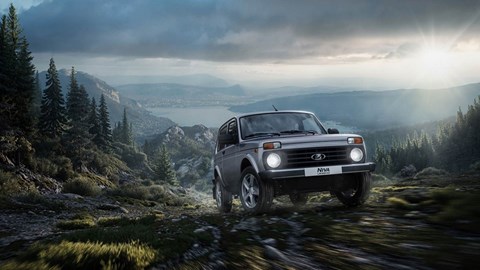
In future, cars from the Dacia-Lada division will be centred around a single, simple platform (today they use four architectures between both brands) and this will allow the division to rationalise its costs by using proven Renault group hardware. The range will be slimmed from 18 bodystyles to just 11 – the idea being to build 1.1m cars on one platform, up from today’s 300,000 per architecture.
A total of seven new Dacias and Ladas will be launched by 2025, including LPG autogas-powered models and E-Tech hybrids for Dacia.
The new Dacia Bigster concept (below) gives a hint of what’s to come: it’s a 4.6m SUV based on the group’s simple CMF-B hardware.
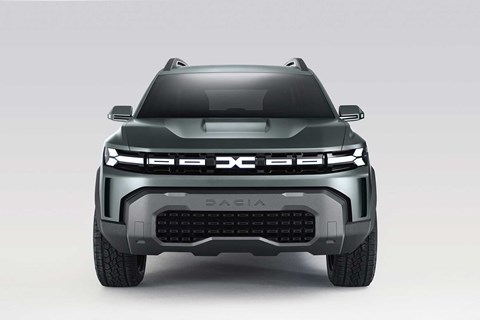
Major cost cuts, less investment in R&D and likely factory closures
De Meo has a reforming mission at Renault and is gunning for a 3% operating margin by 2023, rising to 5% by 2025. ‘We’ve streamlined our operations starting with engineering, adjusting our size when required, reallocating our resources in high-potential products and technologies. This boosted efficiency will fuel our future line-up: tech-infused, electrified and competitive.’
It seems almost certain that factories will close, as Renault removes production capacity to build nearly a million fewer cars a year and the group will reduce its R&D investments from 10% to 8% of revenues. Under the plan, Renault will reduce its fixed costs by €3 billion (£2.6bn) by mid-decade.
Hard decisions, but de Meo’s plan is hellbent on reducing the breakeven point by 30% by 2023. He stressed that a lot of the expensive electric development work has already been done, so profitability could improve quickly.
The Renault mothership: building on B-segment strength, more focus on C-segment and 100% EV in Europe
This screengrab from the presentation reveals the focus on B- (Clio) and C-segment (Megane) products for Renault. Note how the A-segment (city car) is blank, with no new really small models planned – and a smattering of EVs in all sectors, including the company’s prominent commercial vehicle division.
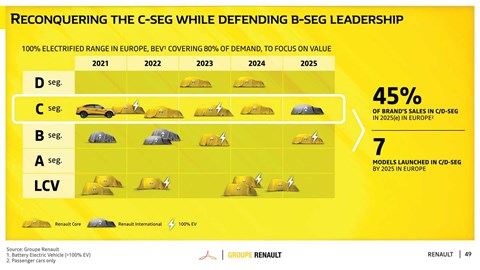
The headline-grabbing news is the introduction of an all-electric Renault 5 – an icon from the Paris firm’s back catalogue, reimagined for launch in the new decade. More on this prototype in our separate news story.
But there’s also the (predictable) focus on new mobility solutions and Renault is determined to grab a slice of the future car-sharing, subscription and e-mobility business. As part of the new strategy, there is a new business unit called Mobilize, which will drive forwards the innovation and digital aspects to the brave new world.
Note also the EZ-1 prototype, which looks similar to the Twizy but is a standalone car to showcase how Renault sees future hardware syncing with the software services that’ll underpin the future of car charging, sharing and operation.
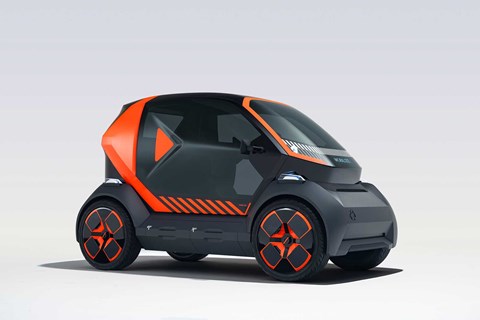
It’s a kind of last-mile solution for city centres.
Stay tuned as we bring more detail on the new Renaulution plan at the Renault group.
Is it enough to revive Renault? Be sure to comment below!